The crackle and pop that mangroves make on a falling tide has faded astern, and the sounds of wind and open water surround me. I’m reclined aboard a Ross Lillistone First Mate, embarked upon another Friday-evening solo micro-cruise, to Outer Newry Island, just off Australia’s Queensland coast, the kind of outing the boat is admirably suited for. Rigging it is a quick, one-person job, and I was on the water minutes after arriving at the ramp. I have a brisk breeze for a quick passage, and in barely an hour I’ll be tucked in behind the island to enjoy the last of the daylight, a rising full moon, and a comfy night’s sleep. An easy dawn sail (or more likely, row) will get me home before the family has stirred much beyond breakfast. These brief overnight getaways give me the feeling I’ve been on a proper trip, and I still have most of the weekend ahead.
Of the various sailboats I’ve owned over the years—the largest a 26′ Folkboat and the smallest a lovely 11-1/2′ Bolger Cartopper—the 15′ First Mate is by far the most versatile. For me, it has been the answer to the Goldilocks Equation: not too large, not too small, just right, The younger sister of Ross Lillistone’s Phoenix III, it has the same interior and the same rigs, but has been adapted from glued-lap plywood to a stitch-and-glue, taped-seam construction that is robust, elegant, and easy to build.
The search for a boat to build, which ultimately led me to the First Mate, started with a list of requirements. The boat had to have straightforward construction that is quick and economical. At the launch ramp it had to be quick and easy to rig, launch, and retrieve singlehandedly. Afloat, it had to be, above all, a rewarding boat to sail, but also a pleasant and capable rowing boat serving as a comfortable cruiser able to look after itself and the crew. And I required, of course, elegant good looks. In the First Mate, Ross achieved all of this in spades.
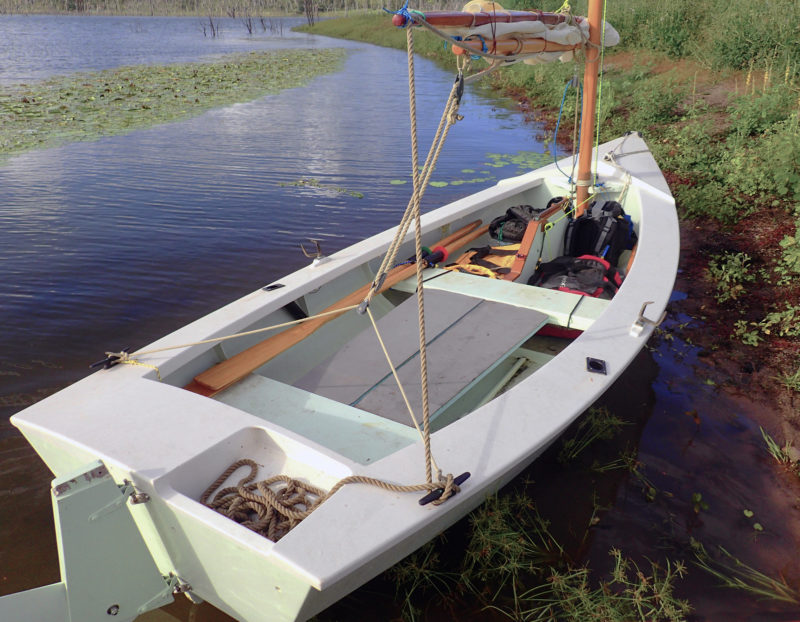 Ian Hamilton
Ian HamiltonThe cockpit’s removable side benches can be pushed to the center to serve as a sleeping platform; an extra pair would make a broader surface. A line keeping the yard and boom from swinging has taken up residence in the motor well.
The plans for the DIY-builder are brilliant. They include 30 pages of scale drawings, showing all of the various pieces, including sails and spars for the three sailing rigs: a sprit sloop with an 81-sq-ft main and a 23-sq-ft jib, a balance lug with 76-sq-ft main, and a Bermudian sloop with a 67-sq-ft main and a 22-sq-ft jib. An illustrated manual provides 70 pages of detailed, step-by-step instructions.
Ross built my First Mate. Originally, he only wanted to go as far as cutting out the hull panels to check the expansions before releasing the plans to the public, but then just kept going and finished the boat for me. He drilled holes 4” apart for the cable ties and only needed to use a fraction of them as the panels came together so easily. No lofting or strongback is required. He thinks the project took about 250 gently paced hours of his time, including spars. There are many detailed construction photos in the First Mate gallery on the Lillistone website.
The First Mate is quite small for her length, with slender lines to address the rowing part of the equation. Some folks who are used to beamier boats may think her tender, but I don’t. She is a fine daysailer for two; three would be okay, though I haven’t tried it. For me, First Mate is primarily a solo boat, and is set up accordingly. I’ve read about lengthy cruises aboard the smaller Phoenix III design, with two sleeping aboard using the same accommodations that the First Mate offers. They must have been cozy.
What I like best about the First Mate are the many small details. Let’s start at the stern and work our way forward. The outboard well is a beauty. It’s small, self-draining, and puts the outboard on the transom where it should be. No messing with a bracket. A 2-hp outboard is more than sufficient.
The cockpit is completely uncluttered, except for the twin self-bailers, which don’t get in the way and are worth their weight in gold. Only a few store-bought fittings are required for the rig, yet all the necessary controls are there. I sail sitting on the bottom (there are no floorboards), leaning against the sides of the hull. It may be counterintuitive, but resting against the turn of the bilge is far more comfortable for my aging bones than sitting on a thwart. Even in a strong wind, I haven’t needed to hike out. The plans detail a pair of movable side seats that rest on cleats mounted on the thwart and stern seat edges. I stow them aft, lying across the stern seat (they are the only things in the boat, other than myself, which aren’t tied in), and I usually only use them as my sleeping platform, or to sit on slightly offset from center while cooking my dinner. With additional pieces, you can make the sleeping platform as wide as you wish.
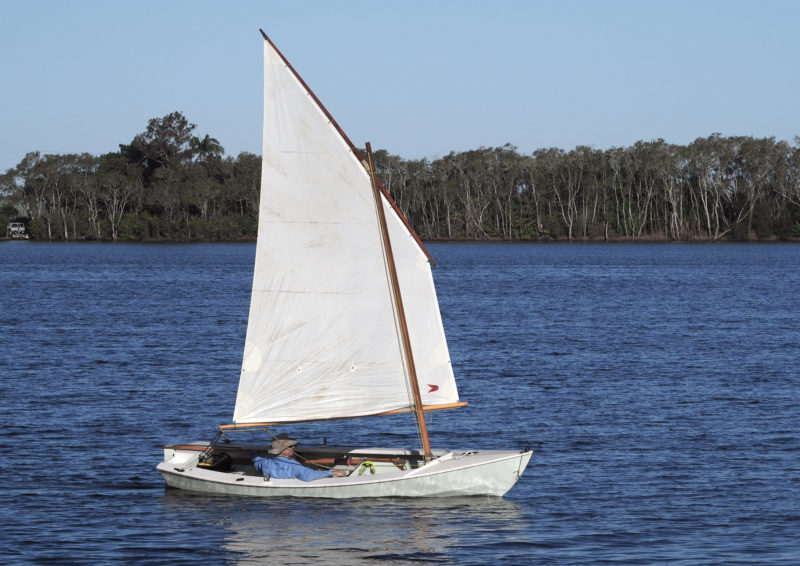 Ian Hamilton
Ian HamiltonThe author prefers stowing the side benches and sitting on the bottom of the boat with the hull sides as his backrest.
Moving forward, we come to the centerboard trunk, which has a shape similar to those in traditional sailing dories. The lowered aft portion accommodates a thwart for a rowing station and the taller portion forward houses a broad upper half of the centerboard, which provides more lateral resistance and fills more of the slot when deployed, reducing drag and fluttering. This arrangement caused the only disagreement Ross and I had over the design of the boat: I wanted to mount the compass on the angled aft edge of the case, right where he put the cam cleat for the centerboard. I would have preferred a weighted board lowered with a lanyard, but Ross turned out to be right. The rigid rod effectively solves the problem of grit jamming the board, and more importantly, indicates how deep the board is set. I had been in the habit of sailing with the centerboard either fully up or fully down, but now I make fine adjustments, and my sailing has consequently improved. I mounted the compass on a board held in position with bungee cord so I can move it to one side if I’m on a very long tack, or I can place it on the aft seat to serve as a rowing compass.
The forward end of the trunk is braced by a half bulkhead that also serves as a “bin” to organize cruising gear. I particularly like the arrangement for stepping the mast. The hollow mast is light and short, and even my sadly arthritic hands have no problem raising it into position. Standing beside the trailer, I lift the mast to the vertical, drop the heel in the step, and hold it in the partners with one hand while lashing it in place with the other. Securing the mast with a lashing is easy and bombproof and avoids the need for a rattly gate.
Splashboards top the foredeck to keep water out of the cockpit. Under the foredeck is a 6.45-cu-ft flotation compartment. Together with the 5.72-cu-ft aft flotation compartment, the First Mate has 755 lbs of buoyancy in fresh water, 779 lbs in salt water. Both of the airtight compartments fore and aft have small access ports, but I leave the compartments empty and the ports sealed while I’m out cruising. The buoyancy of the hollow mast and yard keep the boat from turning turtle after a capsize. The built-in flotation gives me great confidence in open water.
My requirement for a boat with pleasant rowing ability has certainly been met. Under oars, the First Mate is easy to move and balances well in wind from any direction. I happily leave the rig at home to use her as a fishing and crabbing boat, and enjoy trolling as I row. For solo rowing, the boat trims properly and performs well. With three aboard, maintaining trim is easy as the two passengers can sit in the ends, but rowing with two aboard poses a problem for trim if the passenger takes a seat forward or aft. Ross trimmed the First Mate with me sitting on the bottom at his feet while he happily rowed it 6 nm on the Clarence River. If I were going to carry a crowd, I would ship the oars, fire up the outboard, and be done with it.
The First Mate makes a fine launch with an old 3-hp Johnson I have. Since the engine sits on the transom and the aft deck is quite narrow, getting to it from the aft seat to raise and lower it is easy. For steering, I prefer to lock the motor with the steering friction adjuster, and steer with the boat’s tiller. It’s long enough to let me sit forward to trim the boat. It’s a bit quieter too. While it is possible to hit the prop with the rudder, I’d have to try pretty hard. When sitting on the port side seat, the tiller stops at my ribs before the rudder hits the prop. If sitting farther forward, you would need really long arms to push the tiller far enough.
In calm conditions, the motor, running barely above idle, easily gets the First Mate up to hull speed. When our kids were using the Phoenix III as a fishing launch, they would leave the sailing rig and the rudder at home and steer with the outboard’s tiller from the aft seat. They found that flat out, she runs a good bit faster than they might have expected. (No…I don’t know how fast!)
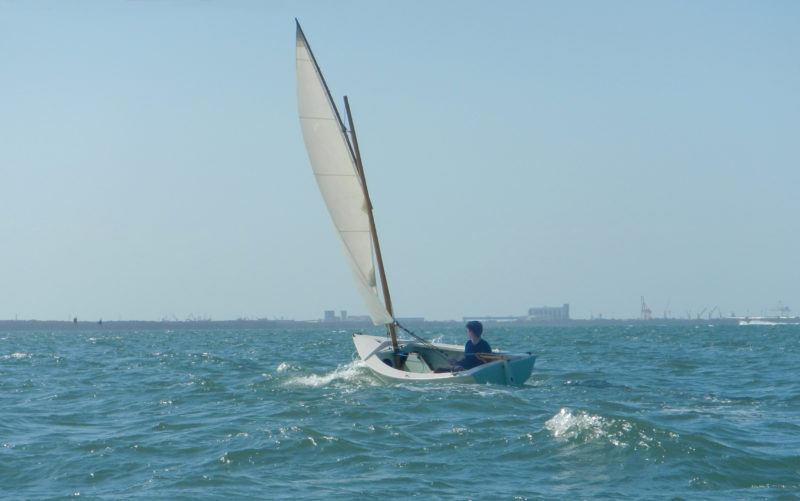 Ross Lillistone
Ross LillistoneThe balance lug rig is the smallest and simplest of the three rigs detailed in the plans, and is a good choice for windy coastal waters.
The Central Queensland coast is windy, so I opted for the smallest of the three rigs, a balance lug of 76 sq ft. I am no racing sailor—some might say I’m not any sort of sailor—but over the years I have managed to sail most of the Queensland coast and have only drowned a little bit. Overall, I’m extremely happy with the rig and the handling of First Mate. It’s fast, responsive, dry, points up nicely, and requires little effort to sail well. The First Mate moves along fine in light air, but really shines when it blows.
On my second day out in the new boat, I caught the edge of a thunderstorm while sailing on a large freshwater reservoir. I hadn’t yet set the rig up for reefing, so I should’ve dumped the rig. With a balance lug, the whole thing will instantly and reliably lower in any conditions, so I should have dropped the sail. But I didn’t, and off we went, skittering away, depowering in the gusts, with rain pouring off the foot of the sail, to be sucked away by the self-bailers. I stayed in control, didn’t ship any water, and was very glad to have been on a lake and not the open sea. I may not have gotten off so easily with a larger, more complex rig. Guess what I fitted up the next day? Haven’t needed to use that reef since!
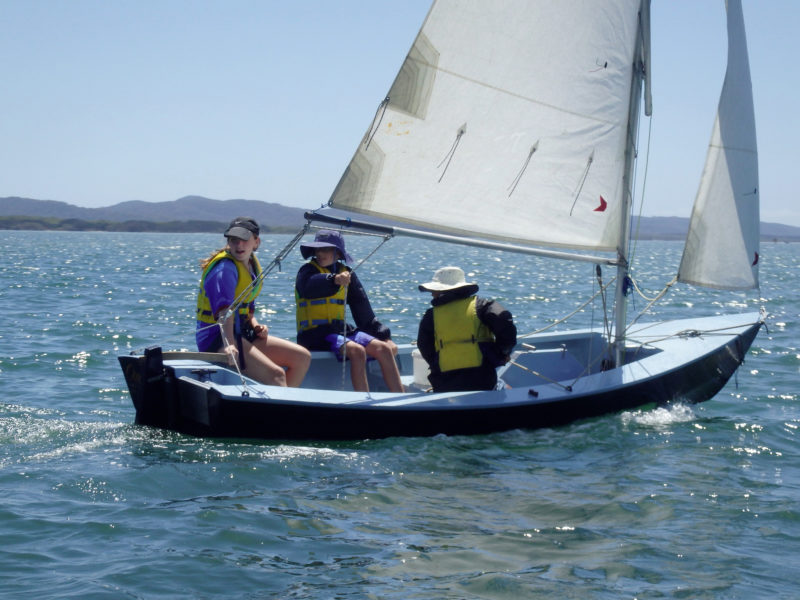 Ross Lillistone
Ross LillistoneThis crew of three has also opted to sail without the side benches, using the side decks instead as seating.
For cruising, I have ample space for all the gear I need. My panic bag stows securely on the aft seat. My overnight gear and galley equipment live in waterproof duffels on the port side of the centerboard trunk. Eventually, I’ll build the galley box shown on the plans. It is designed to stow neatly under the thwart. Anchors stow to starboard and water bottles fit in the forward bin either side of the mast. This arrangement gives me room to scramble up the starboard side to deal with mast, sail and anchor.
I prefer sleeping aboard: there’s nothing to cart ashore, I can bug out at a moment’s notice, and crocodiles are more likely to leave me alone than if I am sleeping on the beach. On my full-moon trips, the tides are typically 20′. A low tide would leave a lot of exposed sand. I often arrive near the bottom of the tide and anchor way out on the flats.
Compared with the sleeping accommodations aboard my little cartopper, the First Mate seems commodious. That’s not saying a lot, but there is plenty of room for one. I haven’t constructed any sort of fancy tent, so my setup is pretty basic, but I have a place to sit, a place for my little camp stove, and a place to sleep in comfort.
I have yet to make an extended passage in this boat, but, based on my experience with her so far, and bearing in mind some very successful cruises undertaken in Phoenix III, I am confident that she’ll do very well under both sail and oars. I should be shortly taking her on a decently long and exposed trip up to the famous Whitsunday Passage, but life keeps getting in the way. Until then, thank goodness for Friday micro-cruises.![]()
Ian Hamilton is a recently retired teacher living in Mackay, Queensland, who was born into a family of surf lifesavers and fishermen. He built his first boat, a tin canoe, as a kid up in the Torres Straits, and consequently learned to swim well. Since then he has always owned a selection of paddle, oar, sail, and power craft in various and sometimes quite isolated parts of Queensland. He is currently operating a Bolger Sharpshooter and a Lillistone First Mate.
First Mate Particulars
[table]
Length/15′
Beam/5′1″
Draft, board up/5.5″
[/table]
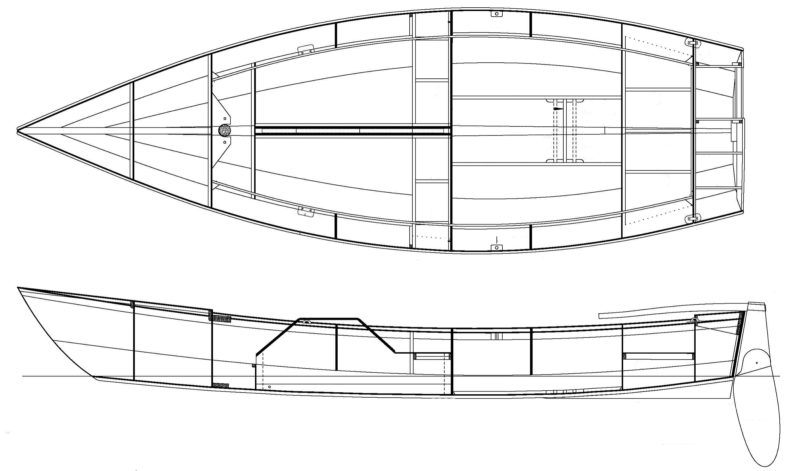
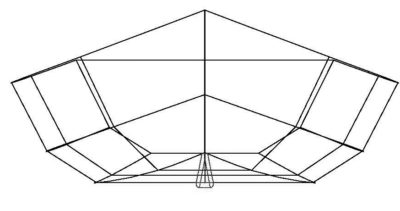

Balance lug
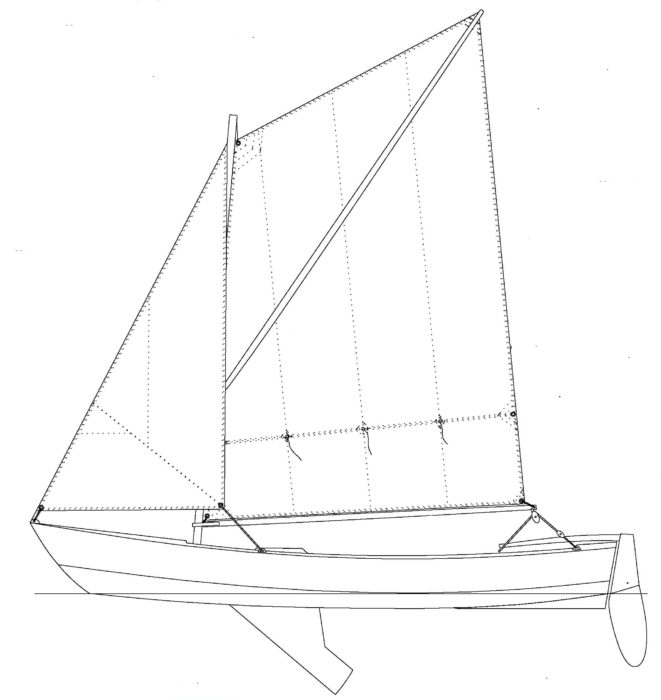
Sprit sloop
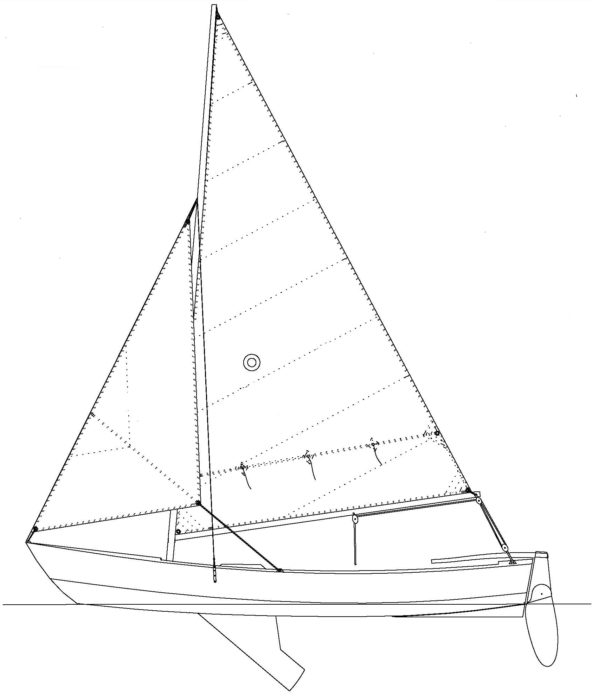
Bermudan sloop
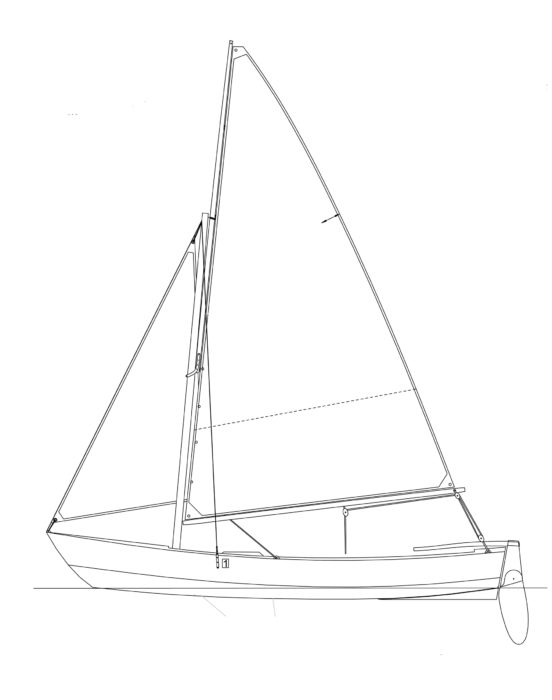
Gunter Sloop
Plans for the First Mate are available from Ross Lillistone ($150 AUS for PDF and $165 AUS printed) and Duckworks ($135 USD for PDF and $171 USD printed).
Is there a boat you’d like to know more about? Have you built one that you think other Small Boats Monthly readers would enjoy? Please email us!
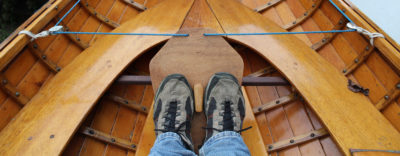

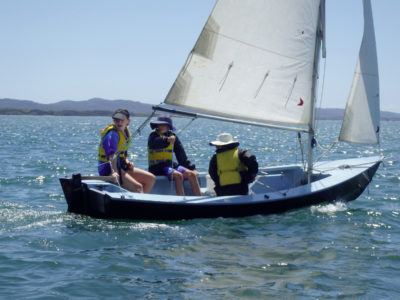
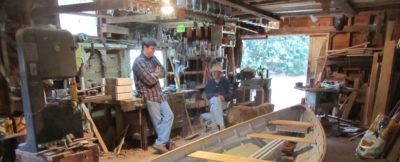
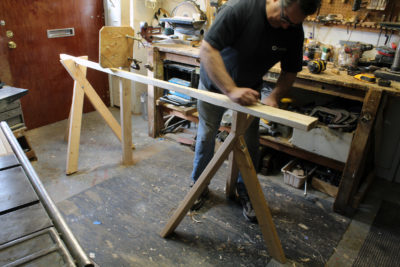
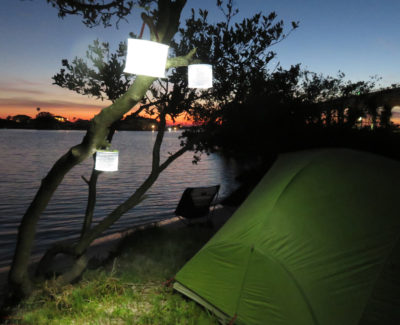
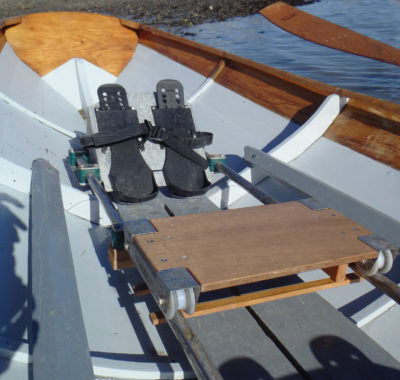
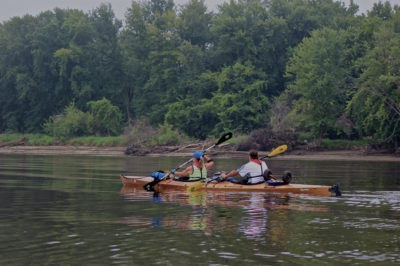
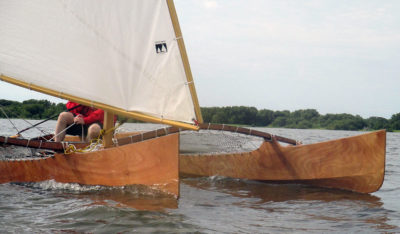
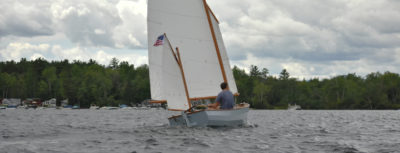
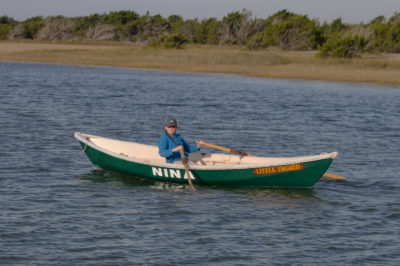

Very interesting boat. Do you happen to know if as well as being simpler, she also comes out lighter than Phoenix III?
Marc, I’ll leave that for Ross to answer. My completed Phoenix III minus rig and rudder weighed 84kg. I did not consciously try to build for light weight. Any difference with First Mate would not be great, IMHO. They are, after all, sister ships!
Al Burke is correct. There is less than 1% difference in ply volume between the two boats – any weight difference will be due to materials used e.g. higher or lower density plywood and timber, glass, epoxy, and so on.
A most enjoyable introduction from Ian to a popular and very useable oar-and-sail boat designed by Ross Lillistone. As well as the Sprit and Bermudian rigs shown above and the balance lug in the photos and video, First Mate can also be rigged with the balance lug alone, or set as a standing lug with a 15.5-sq.-ft. jib set flying for light breezes. Ross has also drawn a Gunter rig.
I got in touch with Ross and he sent his detailed drawing of the gunter-sloop rig along with the note:
“Any new plan sets which go out will have the gunter rig included. Anybody who wants them to add to plans purchased previously can email me for a free drawing.”
A simplified drawing of the rig is included above.
Christopher Cunningham, Editor
Self bailers – can you post a pic of how these were fitted? Thanks.
The installation of the bailer for the First Mate is the same as it is for the Periwinkle. The two photos here are taken from the Periwinkle Gallery on my web site.
Ross, I bought a pair of those for my Phoenix 111 but have not installed them. Is there a minimum speed the boat needs to be doing before these little suckers start to extract water? I seem to remember dinghy racing sailors spoke of 4 knots, but that may have been for suckers of a different design. If the wind wave swells on the lake where I usually sail are not too big and the weather is not too wild, I don’t mind a couple gallons of water rolling around down on the lee floor.
https://smallboatsmonthly.com/wp-content/uploads/2018/03/FirstMateCockpitPS0351web-1-800×622.jpg
“A line keeping the yard and boom from swinging has taken up residence in the motor well.”
That line is the sheet right?
The sheet is the line running through the two blocks and appears as a pair of lines on a diagonal. The near vertical line with its tail end in the motor well is the one keeping the dropped sail and spars from swinging. It’s not used for sailing.
Editor
Looks like the sheet to me. There’s no knot at the end of the boom for the line you say is not used for sailing. They rove the sheet fully through the two blocks on the boom to a point aft of the mast where they bailed the yard, boom, and sail with a half hitch and wrapped the bundle back to the end of the boom. The tension on the traveler thus developed when they secured the sheet to the starboard stern cleat. That’s what keeps the boom, yard and sail from swinging.
You’re quite right, John. I took a close look at the original hi-res photo and got a better sense of what was going on. The line in the well is the main sheet after it went forward to bundle the sail and then come aft again. Thanks for making the correct identification.
Editor